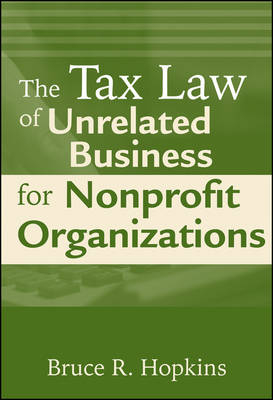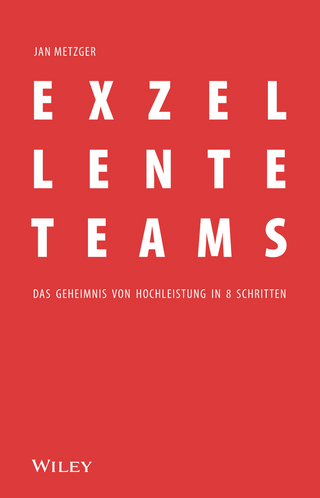
The Tax Law of Unrelated Business for Nonprofit Organizations
John Wiley & Sons Inc (Verlag)
978-0-470-50084-2 (ISBN)
Get comprehensive, detailed guidance on the tax law of unrelated businesses for tax-exempt organizations, written by the leading expert in the field The Tax Law of Unrelated Business for Nonprofit Organizations has everything you need to help you understand and interpret the general rules, modifications, and exceptions of the tax law of unrelated business for nonprofit organizations—including the unrelated debt-financed income rules, commercial activities, use of separate entities, and reporting requirements.
This comprehensive resource equips you to fully analyze your organization's operations from the unrelated business perspective. You'll focus on details pertaining to the unrelated business income tax return (Form 990-T) and its many schedules. In addition, you'll get six appendices and tables to help round out your analysis. This authoritative guide explores every facet of tax law applicable to unrelated business for nonprofit organizations, including the rules governing:
Publishing
Advertising
Corporate sponsorships
Gift shops
Restaurants and cafes
List rentals and exchanges
Trade shows
Travel tours
Real property development
Research programs
Gambling and gaming
Endorsements
Convenience businesses
Foreign source income
This must-have resource is filled with explanations and illustrations and hands-on guidance from Bruce R. Hopkins, the leading authority in nonprofit law. Its in-depth information shows you how to thoroughly and authoritatively manage unrelated business activities and protect your organization's tax-exempt status.
Bruce R. Hopkins is the country's leading authority on tax-exempt organizations and is a senior partner with the firm Polsinelli Shughart. He is the author or coauthor of more than 25 books, including The Law of Tax-Exempt Organizations, Ninth Edition, and the newsletter Bruce R. Hopkins' Nonprofit Counsel, all published by Wiley.
Preface. Chapter One: Tax Exemption and Unrelated Business: Introduction.
1.1 Tax Exemption: A Perspective.
1.2 Source of Tax Exemption.
1.3 Tax-Exempt Organizations.
1.4 Philosophical Principles of Exempt Organizations Law.
1.5 Categories of Tax-Exempt Organizations.
1.6 Rationale for Unrelated Business Rules.
1.7 Organizations Subject to Unrelated Business Rules.
1.8 Tax Exemption and Competition.
1.9 Concise History of the Unrelated Business Rules.
1.10 Private Inurement and Private Benefit.
1.11 Determining Allowable Unrelated Business.
Chapter Two: Unrelated Business: The Basics.
2.1 The Analytic Framework.
2.2 Definition of Trade or Business.
2.3 Fragmentation Rule.
2.4 Profit Motive Requirement.
2.5 Definition of Regularly Carried On.
2.6 Definition of Related Business.
2.7 Definition of Substantially Related Business.
Chapter Three: Modifications.
3.1 Passive Income in General.
3.2 Dividends.
3.3 Interest.
3.4 Securities Lending Income.
3.5 Certain Consideration.
3.6 Annuities.
3.7 Royalties.
3.8 Rent.
3.9 Other Investment Income.
3.10 Capital Gains.
3.11 Gain from Lapses or Terminations of Options.
3.12 Loan Commitment Fees.
3.13 Research Income.
3.14 Electric Companies’ Member Income.
3.15 Foreign Source Income.
3.16 Brownfield Sites Gains.
3.17 Religious Order Rule.
3.18 Charitable Deduction.
3.19 Specific Deduction.
3.20 Net Operating Losses.
Chapter Four: Exceptions.
4.1 Convenience Businesses.
4.2 Businesses Conducted by Volunteers.
4.4 Entertainment Activities.
4.5 Trade Shows.
4.6 Hospital Services.
4.7 Gambling Activities.
4.8 Associate Member Dues.
4.9 Low-Cost Articles.
4.10 Mailing Lists.
4.11 Businesses of Employees’ Associations.
4.12 S Corporation Holdings and Sales.
4.13 Pole Rental Activities.
Chapter Five: Unrelated Debt-Financed Income Rules.
5.1 History and Overview of Rules.
5.2 Unrelated Debt-Financed Income.
5.3 Debt-Financed Property.
5.4 Acquisition Indebtedness.
5.5 Computation of Unrelated Debt-Financed Income.
Chapter Six: Special Rules.
6.1 Rules for Social Clubs.
6.2 Rules for Certain Other Tax-Exempt Organizations.
6.3 Private Foundation Rules.
6.4 Partnership Rules.
6.5 Advertising.
6.6 Corporate Sponsorships.
Chapter Seven: Commercial Activities.
7.1 Commerciality Doctrine: Origins.
7.2 Contemporary Perspective on Doctrine.
7.3 Commercial-Type Insurance Rules.
7.4 Credit Counseling Organizations.
7.5 Social Enterprise Movement.
7.6 Commerciality and Unrelated Business Rules.
Chapter Eight: Use of Separate Entities.
8.1 Necessity of Separate Entity.
8.2 Choice of Form.
8.3 Element of Control.
8.4 Attribution Considerations.
8.5 Capitalization.
8.6 Sharing of Resources.
8.7 Liquidations.
8.8 Controlled Organizations.
8.9 Partnerships and Joint Venture Basics.
8.10 Flow-Through Entities.
8.11. Partnerships—Details.
8.12 Limited Liability Companies—Details.
8.13 Other Joint Ventures.
8.14 Whole Entity Joint Ventures.
8.15 Ancillary Joint Ventures.
8.16 Law-Imposed Joint Ventures.
8.17 Look-Through Rule—Details.
Chapter Nine: Contemporary Applications of the Unrelated Business Rules.
9.1 Educational Institutions.
9.2 Health Care Providers.
9.3 Museums.
9.4 Associations.
9.5 Labor and Agricultural Organizations.
9.6 Fundraising Activities.
9.7 Travel Opportunities.
9.8 Provision of Services.
9.9 Sharecrop Leasing.
9.10 Retirement Plan Reversions.
9.11 Exempt Functions as Unrelated Business.
9.12 Other Instances of Related Business.
9.13 Other Instances of Unrelated Business.
9.14 Agency Rule.
Chapter Ten: Unrelated Business and the Internet.
10.1 State of the “Law”.
10.2 Two Overarching Issues.
10.3 Web-Based Business: Tax Law Perspective.
10.4 Web Site Advertising.
10.5 Web Site Corporate Sponsorships.
10.6 Trade Shows.
10.7 Merchandising.
10.8 Auctions.
10.9 Charity Malls.
10.10 Merchant Affiliate Programs.
10.11 Associations.
10.12 Web Site Material as Periodical.
10.13 Royalty Arrangements.
10.14 Questions Posed by IRS Announcement.
10.15 Summary.
Chapter Eleven: Reporting Requirements.
11.1 Tax Structure.
11.2 Deduction Rules.
11.3 Annual Information Return.
11.4 Unrelated Business Income Tax Return.
11.5 Other Rules Concerning Preparation and Filing of Return.
Appendices.
Appendix A: Sources of the Law.
Appendix B: Internal Revenue Code Sections.
Appendix C: Glossary.
Appendix D: Form 990.
Appendix E: Form 990 T.
Appendix F: Codes for Unrelated Business Activity.
Tables.
Table of Cases.
Table of IRS Revenue Rulings and Revenue Procedures.
Table of IRS Private Determinations Cited in Text.
Table of Related IRS Private Determinations.
Table of Cases Discussed in Bruce R. Hopkins’ Nonprofit Counsel.
Table of IRS Private Determinations Discussed in Bruce R. Hopkins’ Nonprofit Counsel.
Index.
| Verlagsort | New York |
|---|---|
| Sprache | englisch |
| Maße | 169 x 246 mm |
| Gewicht | 662 g |
| Themenwelt | Recht / Steuern ► EU / Internationales Recht |
| Recht / Steuern ► Steuern / Steuerrecht | |
| Wirtschaft ► Betriebswirtschaft / Management ► Planung / Organisation | |
| ISBN-10 | 0-470-50084-0 / 0470500840 |
| ISBN-13 | 978-0-470-50084-2 / 9780470500842 |
| Zustand | Neuware |
| Haben Sie eine Frage zum Produkt? |
aus dem Bereich


